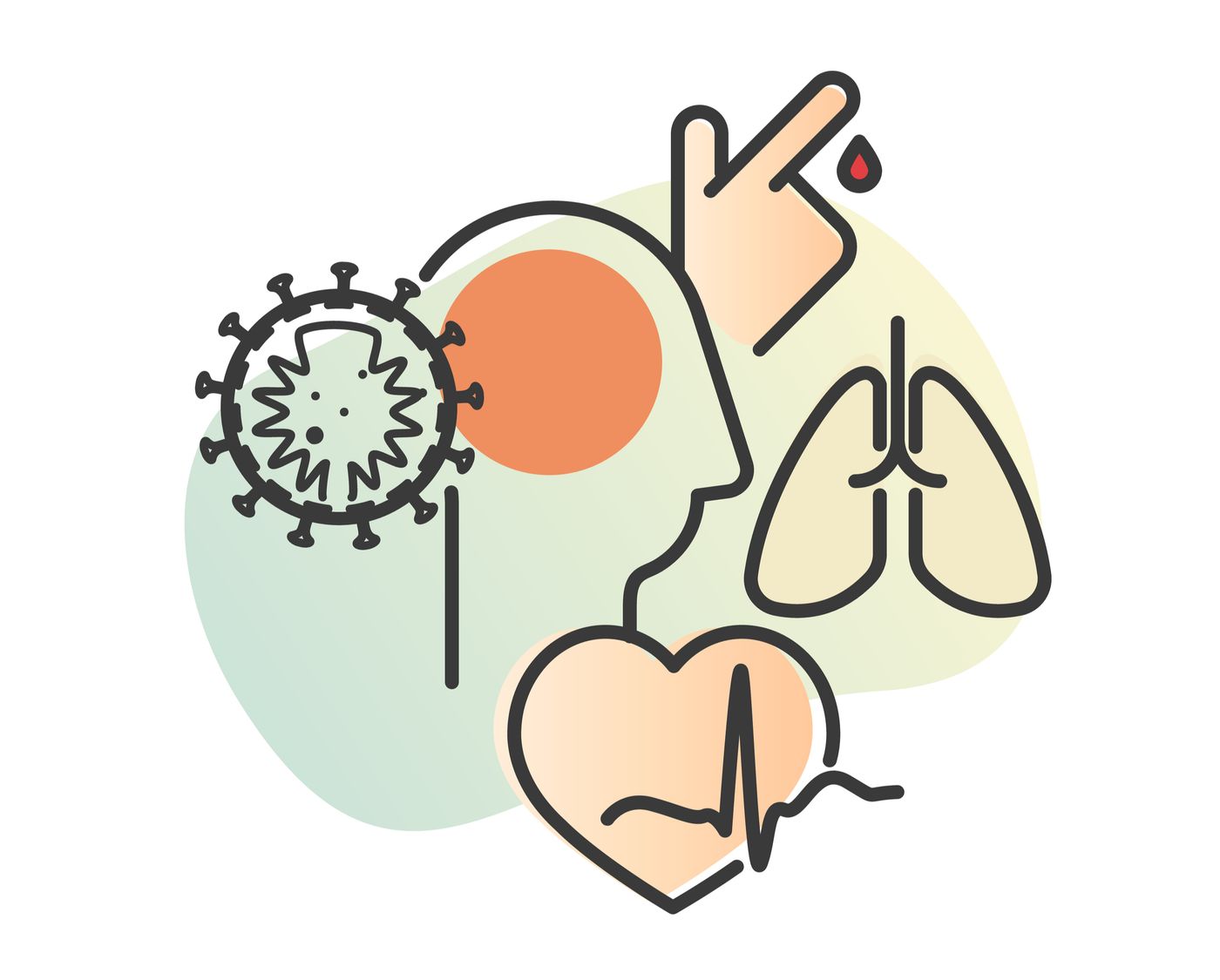Irish National Surveillance Study Finds that Underlying Chronic Conditions Worsen COVID-19 Outcomes
Globally, more than 2 million people have died with a positive test for SARS-CoV-2. The World Health Organization (WHO) estimates that at least 80% of individuals who test positive for COVID-19 are asymptomatic or only develop mild illness. But what leads to the more severe cases in the remaining 20% of infected individuals?
A surveillance study led by the RCSI University of Medicine and Health Sciences in Ireland looked at nearly 20,000 confirmed COVID-19 cases to identify the underlying conditions that are associated with more severe outcomes from COVID-19.
Among the cases studied, there were 1,476 (7.5%) deaths, 2,811 (14%) hospitalizations, and 438 (2%) ICU admissions. The presence and type of underlying conditions captured by the study investigators included chronic heart disease, chronic neurological condition, chronic respiratory disease, chronic kidney disease, chronic liver disease, asthma requiring medication, immunodeficiency condition, diabetes, cancer, or other condition.
Professor Kathleen Bennett, RCSI Associate Professor in Biostatistics said, "Previous studies conducted have suggested that specific underlying conditions influence adverse health outcomes among those with a confirmed diagnosis of COVID-19. However, the majority of these studies have focused on hospital-based or local populations only. This study is the first population-based research to capture data across all settings in Ireland, including both community and hospital settings and so it gives us a better picture of the impact of the disease on patients at the population level.”
The study data identified that the presence of chronic heart disease, chronic neurological condition, chronic kidney disease, or cancer carried the most risk for poor outcomes for patients with COVID-19. Additionally, being morbidly obese (BMI greater than or equal to 40) with or without an underlying chronic condition led to higher risk of more severe COVID-19 outcomes.
Surveillance studies on large numbers of individuals are important because they contribute to a body of evidence that helps countries implement improved public health strategies. As some countries are seeing another wave of COVID-19 infections, gathering data globally helps paint a picture of the infection spread and health impact. Logically, identifying which underlying conditions among COVID-19 cases lead to the highest risk for poor outcome helps implement improved strategies. Beyond public health use, the findings should also enlighten individuals of actions that they can take to reduce complications from COVID-19.









